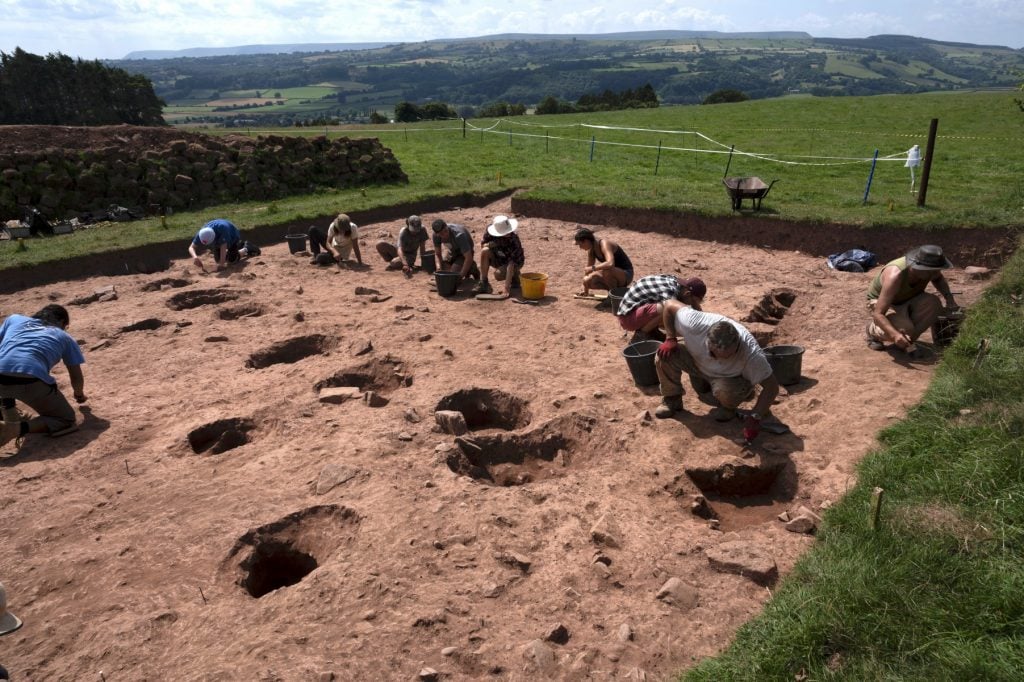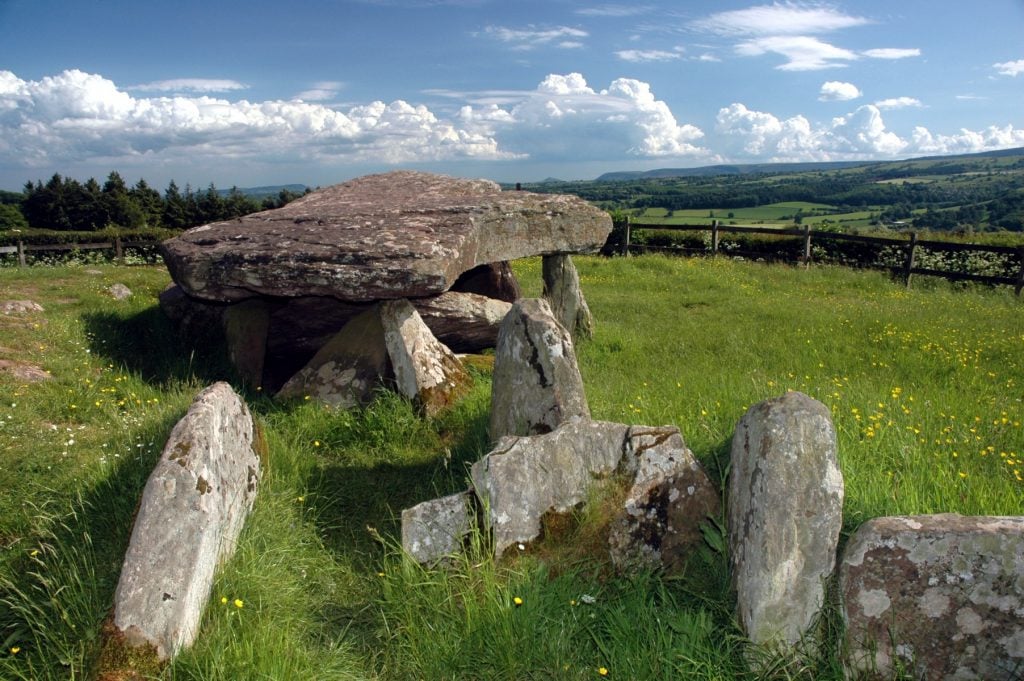For the first time ever, archaeologists have excavated sites near Arthur’s Stone, shedding new light on the origins of the mysterious Neolithic structure, which dates to around 3700 BCE—a full millennium before the construction of Stonehenge (2500 BCE). Based on the new findings, the famed rock tomb in Herefordshire, England now seems to have been part of a region-wide community of shared burial rituals.
According to the archaeologists from the University of Manchester and Cardiff, the hulking Stone Age tomb can now be understood in relation to the 6,000-year-old “halls of the dead” discovered nearby in 2013, which were used to store bodies before they were moved into individual chambered tombs. The researchers discovered the burned remains of the halls, which they said were intentionally set alight, and later incorporated into burial mounds.
Based on the new excavation’s findings, Arthur’s Stone was actually built in two distinct phases of construction. In its first incarnation, it was based on a large mound of stacked earth pointing southwest and surrounded by wooden posts, which ultimately decayed—similar in form to what is known of the “halls of the dead.” Later, it was rebuilt with larger post pillars, two rock chambers, and an upright stone facing southeast, according to Current Archaeology.

Excavations near Arthur’s Stone. Courtesy of the University of Manchester and Cardiff.
Professor Julian Thomas, part of both the new excavation and the earlier finds, explained the significance of the new findings on the University of Manchester website. Because of the similarities between the previously hidden first phase of Arthur’s Stone and the recently identified “houses of the dead,” “the block of upland between the Golden Valley and the Wye Valley is now becoming revealed as hosting an integrated Neolithic ceremonial landscape.”
The excavation was part of the Beneath Hay Bluff Project, which is dedicated to investigating Neolithic structures in southwest Hereforshire.
The 2013 discovery yielded artifacts similar to others found in Yorkshire dating from 2600 BC. This led scholars to believe that the site remained an important venue for ceremonies 1,000 years after the halls were initially built, strongly suggesting links between communities in Hereforshire and East Yorkshire over many generations.
Arthur’s Stone, a UNESCO-listed heritage site, served as inspiration for the “stone table” in C.S. Lewis’s fantasy book The Lion, the Witch, and the Wardrobe, where it was imagined as a table built by lion king Aslan’s father. Though Lewis’s version consists of a large slab of rock supported by four smaller rock pillars, the real-life structure is actually composed of nine standing stones supporting a 25-ton hulking quartz capstone.







